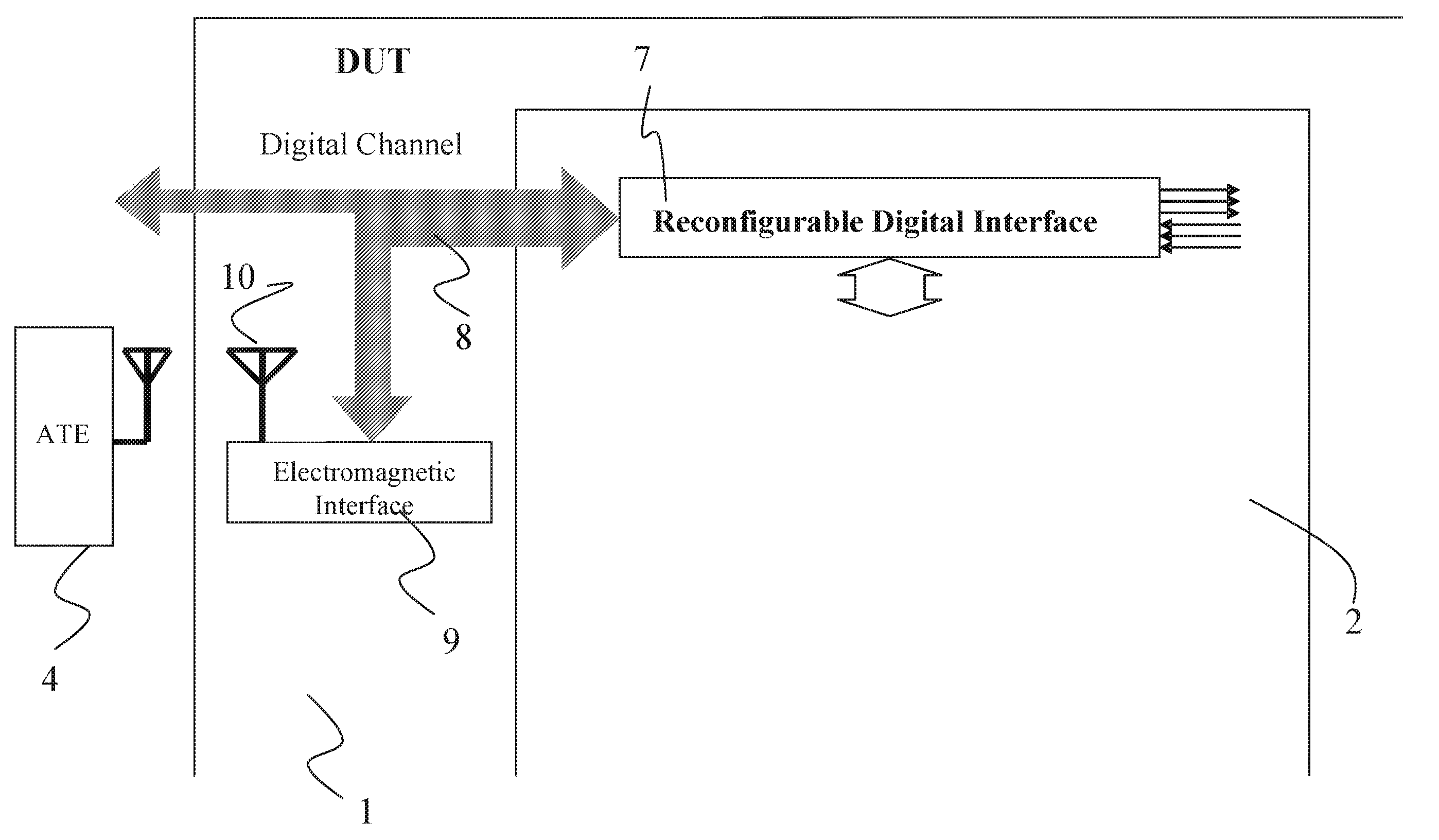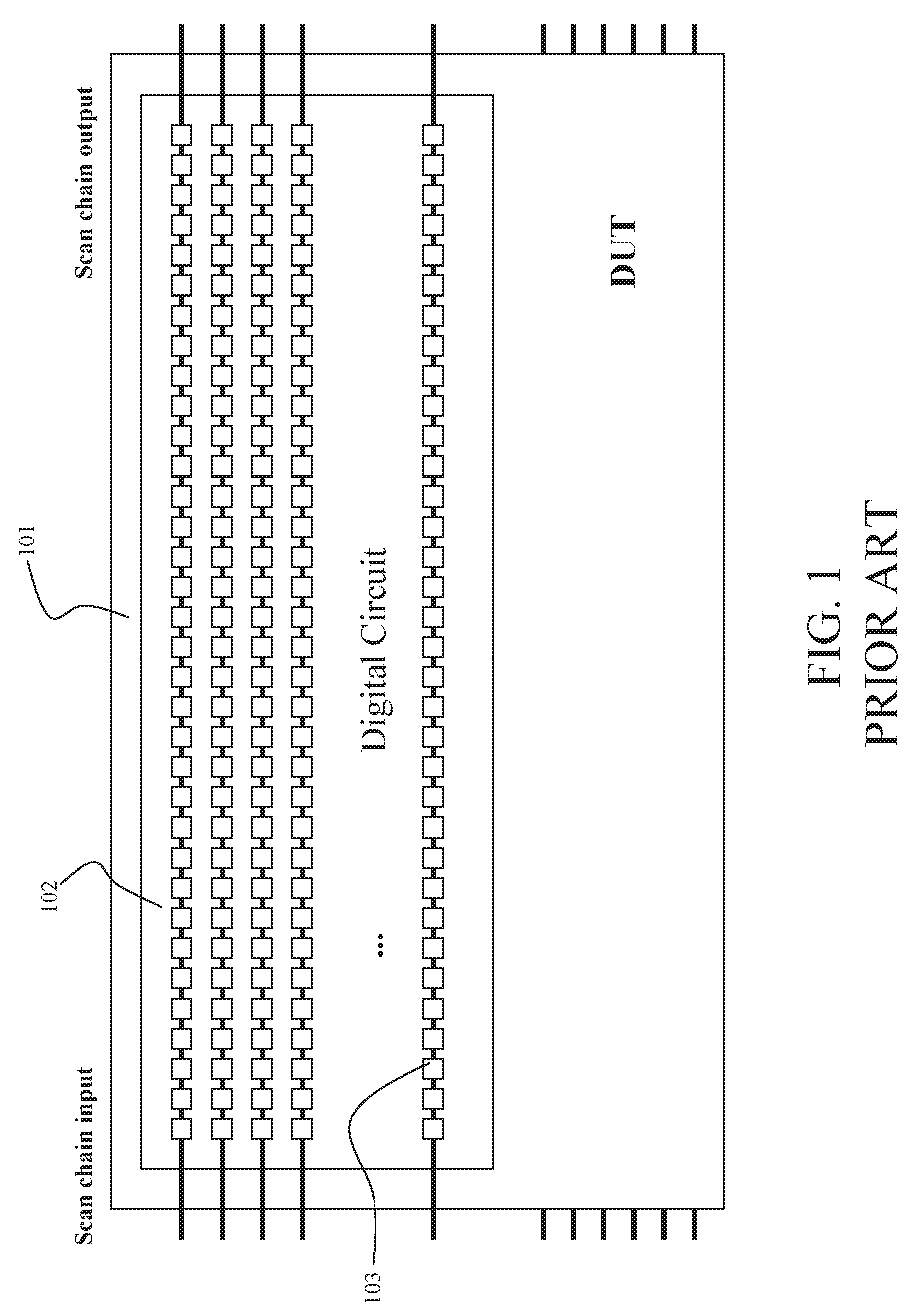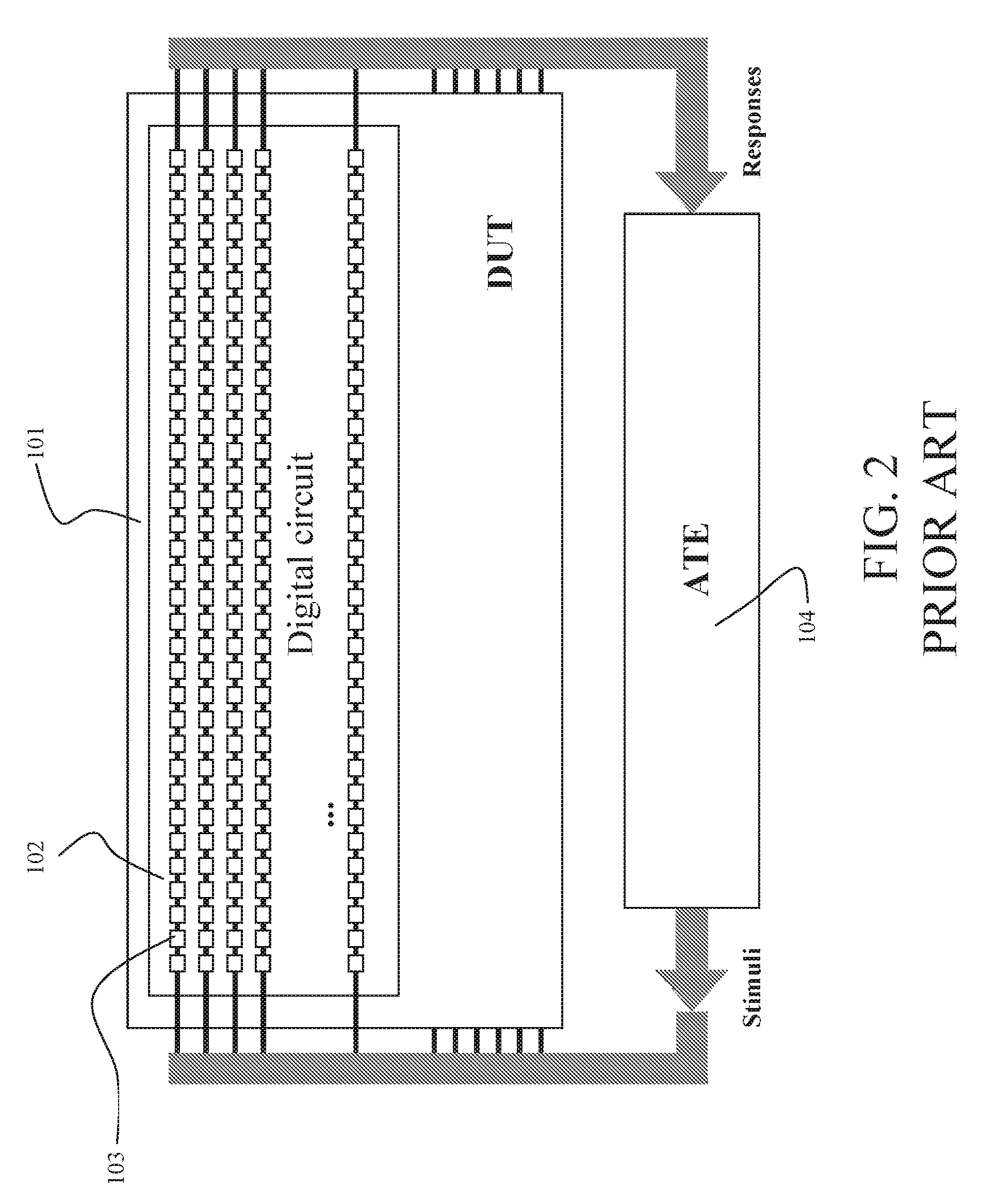Process for making an electric testing of electronic devices
- Summary
- Abstract
- Description
- Claims
- Application Information
AI Technical Summary
Benefits of technology
Problems solved by technology
Method used
Image
Examples
Embodiment Construction
[0190]With reference to these figures, the steps are now described of a process of electric testing of electronic devices according to one embodiment. In particular, as it will be clear hereafter in the description, one embodiment describes a testing process of the supervised type.
[0191]In particular, FIG. 4 shows a schematic representation of a digital ATE 4 connected to the device DUT 1 wherein a reconfigurable digital interface RDI 7 is integrated suitable for creating, between the DUT 1 and the digital ATE 4, a mainly digital communication channel ChD 8 that, advantageously, can comprise multiple wired or wireless, or in part wired and in part wireless, communication lines. In particular, at least one part of the digital channel (and at most the whole digital channel) of the digital interface RDI 7 of the DUT 1, indicated with 8 in the figure, instead of being connected directly to the ATE 4, is connected to at least one further wireless or wireline interface. According to the e...
PUM
 Login to View More
Login to View More Abstract
Description
Claims
Application Information
 Login to View More
Login to View More - R&D
- Intellectual Property
- Life Sciences
- Materials
- Tech Scout
- Unparalleled Data Quality
- Higher Quality Content
- 60% Fewer Hallucinations
Browse by: Latest US Patents, China's latest patents, Technical Efficacy Thesaurus, Application Domain, Technology Topic, Popular Technical Reports.
© 2025 PatSnap. All rights reserved.Legal|Privacy policy|Modern Slavery Act Transparency Statement|Sitemap|About US| Contact US: help@patsnap.com



